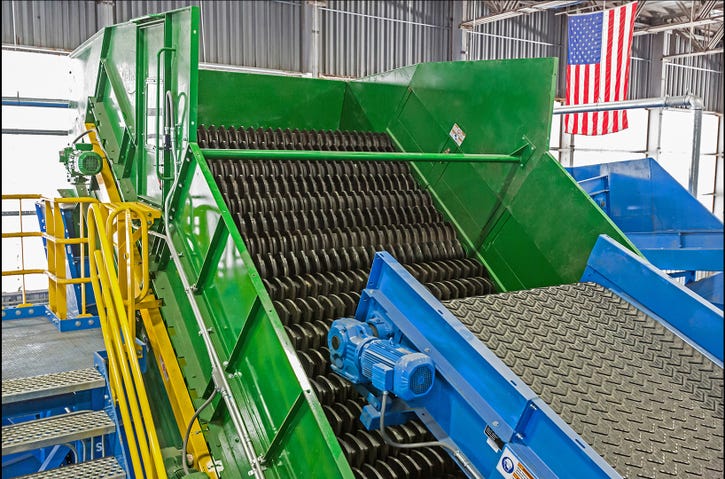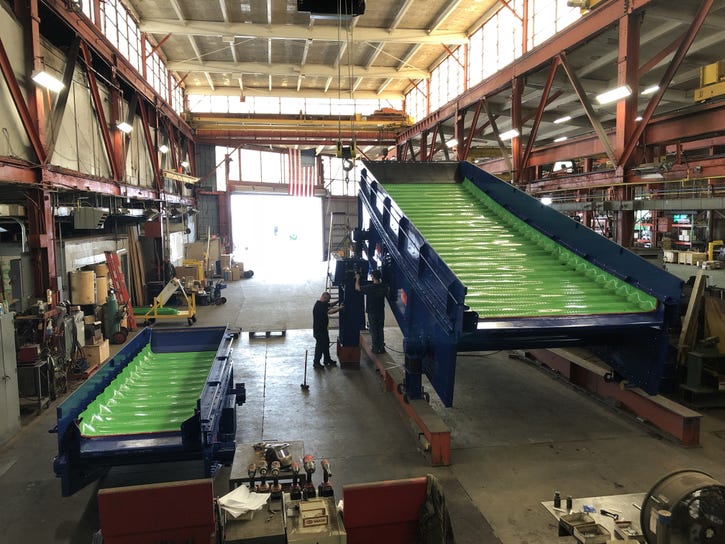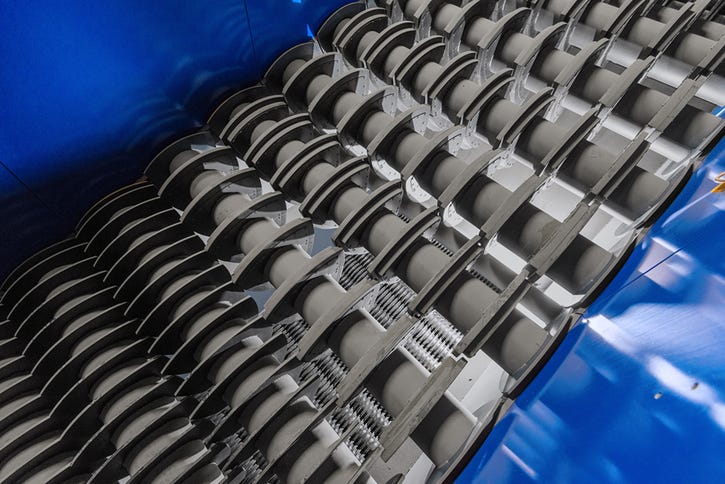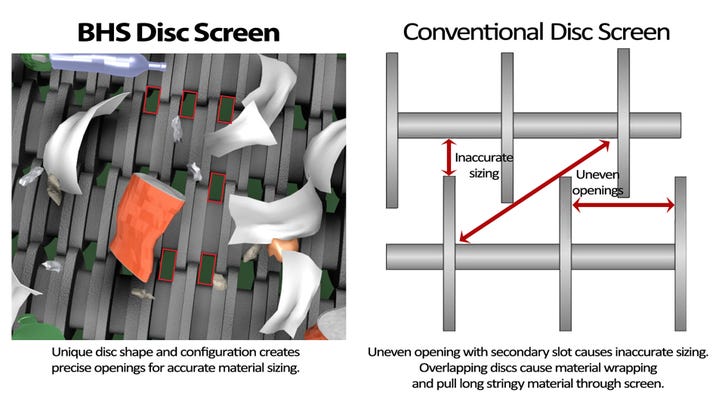Screening Technology Equals “Modern-day Urban Mining”
Here's how companies like Vermeer Corp., Bulk Handling Systems and Aggregates Equipment Inc. tackle waste sorting utilizing different types of screens.

Screening is fundamental in recovering recyclable commodities from waste streams. The equipment and technology behind it gives users the ability to sort material of different sizes to allow the smaller material to fall through the screens. With multiple types of screens available to the industry, manufacturers are continuously looking for ways to improve efficiency with innovative technology.
Companies like Vermeer Corp., Bulk Handling Systems (BHS) and Aggregates Equipment Inc. (AEI) each tackle waste sorting utilizing different types of screens, addressing challenges with new technology.
For example, ease of maintenance is an ongoing need in mobile equipment, according to Jeff Bradley, product manager for recycling and forestry at Pella, Iowa-based Vermeer.
“Being able to service your machine efficiently and quickly so you can be back up and running is crucial in any operation,” he says. “Vermeer designs their trommel screens with this in mind, providing convenient access doors, quick change screens and drums and many other features to help the contractor maintain their machine.”
Peter Raschio, marketing manager for BHS, based in Eugene, Ore., says the ability to adjust to a changing material stream is vital in today’s challenging and ever-changing markets.
“On all BHS screens, opening between the discs can be changed,” he says. “On the BHS NewSorter and the Polishing Screen, HMI angle and fantail adjustments provide operators flexibility to quickly respond to processing conditions.”

As processing needs increase and finer sizing is required, David Stairs, president of AEI, located in Lancaster, Pa., says screens that can accommodate will be key pieces of equipment in any process.
“The greatest improvement in screen efficiency comes from keeping the screen clean, open and operating. When the holes are closed, it’s a conveyor, not a screen,” he says.
One of the main benefits of utilizing screening equipment for waste sorting is that it can increase the recovery rate of commodities.

“Many commodities need a specific product size to increase value, which is what drives the need to separate by size,” says Bradley. “As an example, when buying a load of gravel or rock, you want to only get the size you need, not a full range of 6-inch rocks down to pebbles. By sorting by size, the supplier is able to achieve specific size classes and, therefore, able to charge more per ton of material.”
Precise and accurate sizing of material is the first step in material separation that produces clean, marketable commodities and high recovery, according to Raschio.
“Accurate screen separation improves sorting efficiency, prevents dirt buildup on equipment and reduces contamination of end products,” he says.
Raschio says he thinks screening will continue to be vitally important in recycling systems and that screens with precise separation, high throughput and high uptime will continue to lead the industry.

Vermeer sees the screening market as one that will continue to increase as more people realize the benefits of using a screen to create a higher value end product or to help reduce wear in other processing equipment, says Bradley.
Vermeer manufactures trommel screens with multiple drum and screen options. Built for applications including compost, wood waste, green waste and other organic separation needs, the Vermeer trommel screens are equipped with tensioned screens, along with auger style drums for certain applications.
“Vermeer offers a three product trommel as well that separates material into three sizes,” says Bradley. “If you add the ability to prescreen the material as it goes into the feed hopper with a grizzly option, it could screen up to four material sizes.”
BHS offers several sizes of screens, engineered for separation of a wide variety of material including old corrugated cardboard (OCC), plastics, glass, newsprint, compost and organics, mixed paper and containers. The company’s screens feature its in-line disc technology, with the BHS Tried-Disc.

“The triangular configuration of the screens’ discs agitates material in a wave-like action, rapidly moving larger material over the screen while smaller materials fall through the precise opening between the discs,” says Raschio.
AEI manufactures the BIVITEC Flip-Flow screen and the Eco-Star Dynamic Disc Screen. The BIVITEC screen handles high moisture and fibrous materials at small sizes without plugging or blinding. For coarse sizing, the Eco-Star Dynamic Disc screen offers a flat profile of discs and free-floating spacer pipes that prevent plastic film from wrapping around the shafts.
“Our technologies were developed to address difficult screening problems when water and other solutions proved infeasible,” says Stairs. “Recovering recyclable commodities from waste streams provides these same sizing challenges but to the extreme. Waste processing is modern-day urban mining.”
About the Author
You May Also Like


